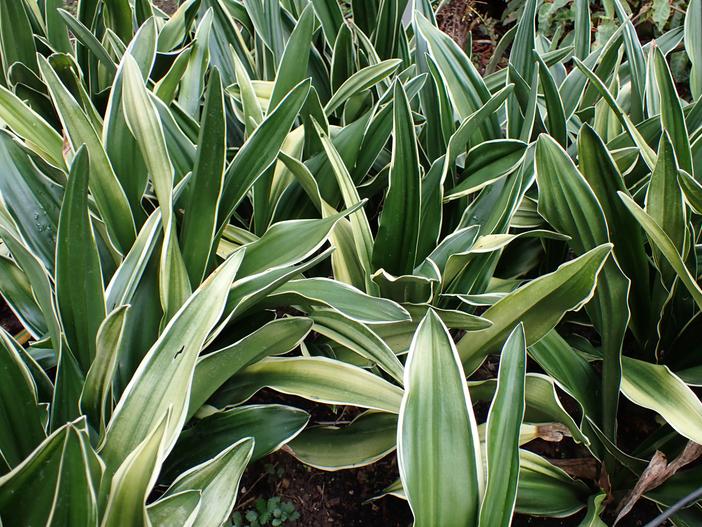Japanese Sacred Lily
(Rohdea japonica)
Japanese Sacred Lily (Rohdea japonica)
/
/

Krzysztof Ziarnek, Kenraiz
CC BY-SA 4.0
Image By:
Krzysztof Ziarnek, Kenraiz
Recorded By:
Copyright:
CC BY-SA 4.0
Copyright Notice:
Photo by: Krzysztof Ziarnek, Kenraiz | License Type: CC BY-SA 4.0 | License URL: https://creativecommons.org/licenses/by-sa/4.0 | Uploader: Kenraiz | Publisher: Wikipedia Commons


































Estimated Native Range
Summary
Rohdea japonica, commonly known as Japanese Sacred Lily, is an evergreen perennial herb native to the forest floors and shaded rocky outcrops of East Asia, particularly in Japan, Korea, and China. It typically grows to a height of 12-18 inches (30-45 cm) and spreads 18-24 inches (45-60 cm). The plant forms dense clumps of dark green, leathery leaves that are broad lanceolate, 15–50 cm long and 2.5–7 cm broad, with an acute apex, contributing to its lush appearance throughout the year. The inconspicuous flowers are produced in a short, stout, dense spike 3–4 cm long, each flower pale yellowish, 4–5 mm long, and are not particularly showy. However, the plant is valued for its attractive foliage and the bright red berries that follow the flowers, each berry being about 8 mm in diameter and produced in a tight cluster.
Japanese Sacred Lily is a low-maintenance plant that is often used in shaded garden areas, as ground cover, or in container plantings due to its tolerance for low light conditions. It is appreciated for its evergreen foliage, which provides year-round interest, and its red berries, which can add a splash of color in the winter garden. This plant prefers part shade to full shade, consistently moist but well-drained soils, and can tolerate a range of soil types. While it is generally pest and disease-free, it can occasionally suffer from root rot if overwatered or planted in poorly drained soils. It is also resistant to deer and other herbivores, making it a good choice for gardens with wildlife pressure.CC BY-SA 4.0
Japanese Sacred Lily is a low-maintenance plant that is often used in shaded garden areas, as ground cover, or in container plantings due to its tolerance for low light conditions. It is appreciated for its evergreen foliage, which provides year-round interest, and its red berries, which can add a splash of color in the winter garden. This plant prefers part shade to full shade, consistently moist but well-drained soils, and can tolerate a range of soil types. While it is generally pest and disease-free, it can occasionally suffer from root rot if overwatered or planted in poorly drained soils. It is also resistant to deer and other herbivores, making it a good choice for gardens with wildlife pressure.CC BY-SA 4.0
Plant Description
- Plant Type: Herb
- Height: 0.5-1 feet
- Width: 0.5-0.8 feet
- Growth Rate: Slow
- Flower Color: N/A
- Flowering Season: Spring, Summer
- Leaf Retention: Evergreen
Growth Requirements
- Sun: Part Shade
- Water: Medium
- Drainage: Slow, Medium, Fast
Common Uses
Bank Stabilization, Border Plant, Groundcover, Low Maintenance, Potted Plant, Rock Garden, Street Planting
Natural Habitat
Native to the forest floors and shaded rocky outcrops of East Asia, particularly in Japan, Korea, and China, and thrives in part shade to full shade conditions
Other Names
Common Names: Sacred Lily, Nippon Lily, Rosettrams, 만년청
Scientific Names: , Rohdea japonica, Orontium japonicum,
GBIF Accepted Name: Rohdea japonica (Thunb.) Roth